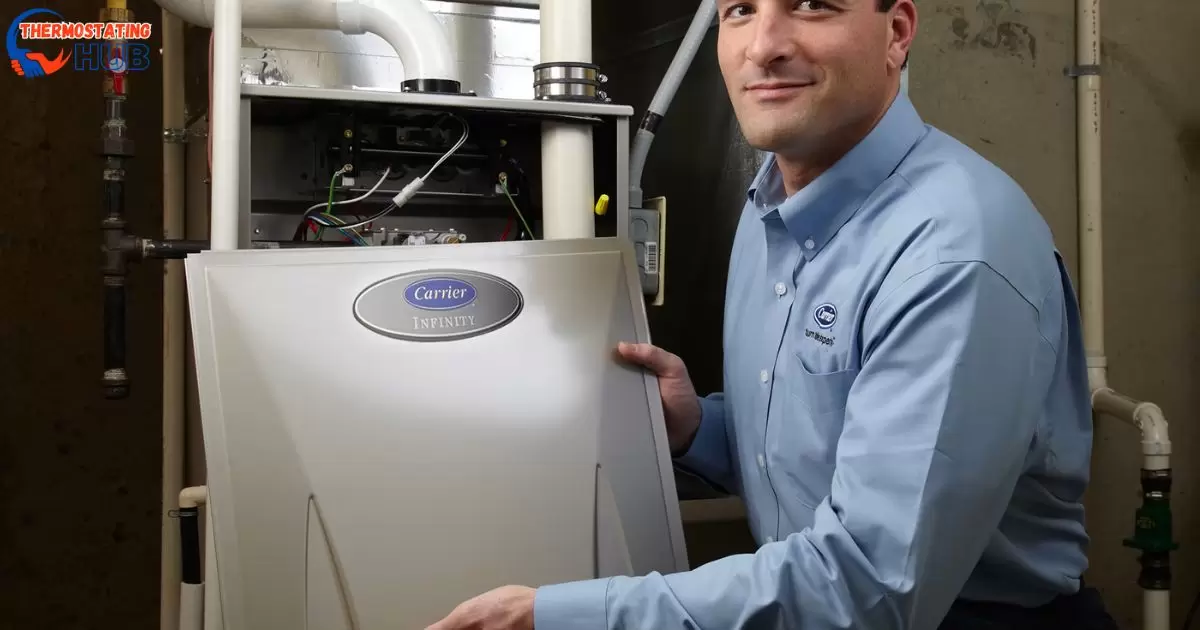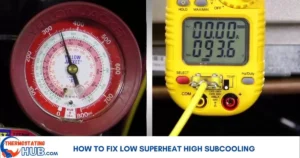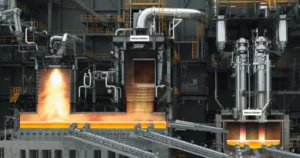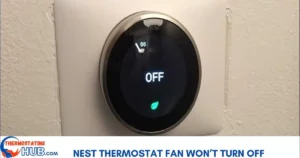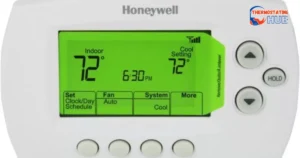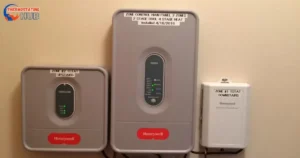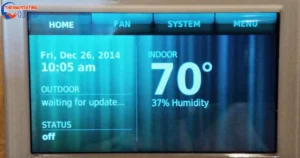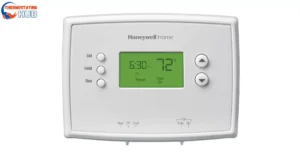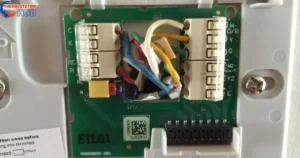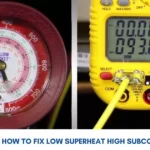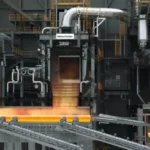Experiencing status code 34 and 14 troubles with your Carrier furnace? You’ve landed in the right spot.
Code 34 on a Carrier furnace signals an ignition proving fault, revealing that the flame wasn’t detected during the ignition trial. Usually, the control initiates the ignition process three more times before transitioning to status code 14. 🔥
Possible Causes for Carrier Furnace Code 34 And Solutions
| POTENTIAL CAUSE | SOLUTION |
| Dirty flame sensor | Clean or replace the flame sensor |
| Faulty or cracked ignitor | Replace the hot surface ignitor |
| Malfunctioning flame sensor | Replace the flame sensor |
| Defective gas valve | Replace the gas valve |
| Faulty furnace control board | Replace the furnace control board |
Here’s a quick guide to address the issues when your furnace acts up. Make sure the flame sensor is dirt-free, swap out a malfunctioning ignitor, or get a new flame sensor if needed.
If the problem lingers, it’s time to check the gas valve and the furnace control board. These simple steps can help bring back the warmth to your space. 🔧
Read More: Nest Thermostat Low Battery Message Problem
Dirty Bad flame sensor
The flame sensor plays a crucial safety role in furnaces, taking the shape of a straight or L-shaped rod. Its main job is to detect flames on the burner assembly.
When the furnace starts and the flame sensor fails to spot flames, it triggers signals sent to the control board. As a result, the control board cuts off the gas supply, preventing any potential gas leakage. 🚫
With time, the combustion process leads to the accumulation of oil and debris on the flame sensor. This buildup can hinder the sensor’s accurate flame detection, causing issues like an unreliable or “Dirty Bad” flame sensor.
It’s worth noting that the flame sensor becomes crucial only when the burners activate, ensuring a stable and safe combustion process.
Keep in mind that flame sensors generally last around 5 years. If cleaning doesn’t resolve the problem, it might be a sign that the flame sensor has dutifully served its time in the furnace. ⏳
Solution: Maintaining and Replacing Flame Sensors
- Access the Flame Sensor: Open the protective cover guarding the burner assembly, typically behind the burners. To do this, use a nut driver.
- Cleaning: Gently clean the flame sensor using a method like sandpaper or a material such as a $5 bill. Ensure it is moderated during cleaning to avoid reducing the sensor’s lifespan.
- Persistent Issue After Cleaning: If the problem persists post-cleaning, there might be an issue with the sensor itself.
- Replacement: If the flame sensor is found to be faulty, the most effective solution is to replace it with a new one. This ensures the ongoing safety and efficiency of your furnace. 🔄
Bad ignitor
Dealing with status code 34 on your Carrier thermostat? A faulty ignitor could be the culprit.
Most likely, your newer furnace is equipped with a hot surface ignitor. If this ignitor is damaged, it leads to ignition failure. 🔥
Identifying a malfunctioning ignitor can be tricky unless you use a multimeter to test its continuity.
Found on the right side of the burner, the ignitor has two connected wires and plugs into the control board’s wiring.
No continuity in the ignitor signals an apparent defect, indicating the need for a replacement.
Harmful Gas Valve
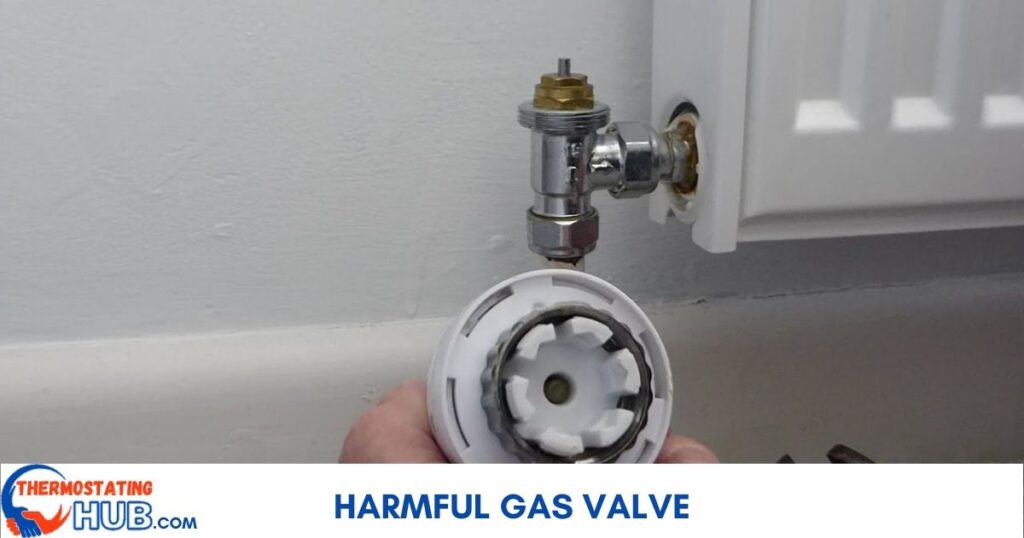
Encountering status code 34 on your Carrier furnace? A faulty gas valve might be the culprit.
A malfunctioning gas valve can disrupt ignition by not delivering the proper amount of gas to the burners. This can occur if the valve is stuck closed, limiting gas flow, or not fully opening due to a mechanical issue. ⚙️
Without the correct gas flow, the furnace lacks the fuel-air mixture for combustion, leading to ignition failure and triggering status code 34.
To troubleshoot a problematic gas valve, use a voltmeter to test the voltage at the gas valve while the igniter is glowing. If you measure 24 volts AC, it could signal a gas valve issue.
However, if you don’t detect this voltage, it suggests a potential problem with the control board or a poor connection between the control board and the valve.
Bad Control Board
If none of the earlier troubleshooting steps resolves status code 34, a malfunctioning furnace control board could be the issue.
The control board is crucial for coordinating the furnace’s ignition sequence. It may fail to send the necessary signals to initiate the ignition process if it malfunctions.
Issues with signal transmission, sensor communication, timing regulation, or relay functions can all arise from a faulty control board, hindering the correct functioning of the ignition system in the Carrier furnace.
Consider seeking a second opinion from an on-site technician at this point. If indeed faced with a defective furnace control board, the most effective solution is to replace it with a new one. 🔄
Decoding Carrier Furnace Code 34 and 14: Pros and Cons
| Issue | Pros | Cons |
| Flame Sensor | Simple DIY cleaning process | – May need periodic cleaning due to oil and debris buildup |
| Ignitor | Common in newer furnaces | – Requires multimeter for diagnosis |
| Gas Valve | Identifiable by testing voltage | – Complex troubleshooting may involve the control board or poor connection |
| Control Board | Coordinates furnace ignition sequence | – Replacement may require professional assistance, which adds to the cost |
When grappling with carrier furnace code 34 and 14, each issue has its pros and cons. While cleaning the flame sensor is a straightforward DIY task, it may need regular attention. The ignitor, common in newer furnaces, requires a multimeter for diagnosis. Troubleshooting a faulty gas valve involves testing voltage but can be complex. The control board, responsible for ignition coordination, can be a challenge, often requiring professional assistance for replacement.
Future Innovations for Carrier Furnace Code 34 and 14

As technology advances, so do the solutions to common issues like Carrier Furnace Codes 34 and 14. Here’s a glimpse into potential next-gen fixes:
Smart Sensors: Integration of advanced sensors with real-time monitoring capabilities, reducing the need for frequent manual cleaning. These sensors could adapt to varying combustion conditions.
Diagnostic Apps: Future furnaces might come equipped with diagnostic apps, allowing homeowners to receive detailed error reports and potential fixes directly on their smartphones, streamlining troubleshooting.
Self-Correcting Ignitors: Innovative ignitors are designed to self-diagnose and rectify minor issues, minimizing the need for external interventions. This could enhance overall system reliability.
AI-Enhanced Control Boards: Artificial Intelligence (AI) is incorporated into control boards for more precise and adaptive ignition sequence coordination. This could optimize performance and identify potential issues proactively.
Embracing these next-gen technologies could revolutionize how we deal with furnace issues, making troubleshooting more intuitive and ensuring greater reliability in home heating systems.
Key Takeaways on Carrier Furnace Code 34 and 14 Troubleshooting
Early Detection Saves Costs: Promptly address furnace issues to prevent costly repairs. Early detection is key.
DIY Solutions Are Handy: Simple tasks like cleaning the flame sensor can be done yourself, but know when to call a professional.
Comprehensive Troubleshooting: Codes 34 and 14 involve various components. Be prepared for a multifaceted approach.
Embrace Tech Solutions: Explore emerging technologies for efficient and future-proof furnace solutions.
Consult Professionals: Consult a technician for accurate diagnosis and solutions when in doubt.
Maintain a well-functioning furnace for efficient and reliable home heating.
Answers To Key Questions
What is the code 34 on a furnace?
Code 34 on a furnace typically indicates a problem with the ignition. It may be triggered by issues such as a dirty flame sensor, faulty ignitor, or problems with the gas supply. Professional inspection is recommended for accurate diagnosis and resolution.
What is error code 14 on a Carrier furnace?
Error code 14 on a Carrier furnace generally points to an ignition lockout. This could be due to ignitor, gas valve, or flame sensor issues. Professional HVAC service is recommended to diagnose and address the specific cause of the error properly.
What is the code 3 4 on a Carrier furnace?
Code 34 on a Carrier furnace typically indicates an ignition problem. This can be caused by issues such as a dirty flame sensor, faulty ignitor, or problems with the gas supply. Professional inspection is advised to identify and resolve the specific issue.
What causes ignition lockout on a furnace?
Various factors, including a malfunctioning ignitor, problems with the gas supply, a dirty flame sensor, or issues with the ignition control, can cause ignition lockout on a furnace. A professional inspection is recommended to determine the root cause and carry out necessary repairs.
Final thoughts
In Carrier furnace troubleshooting, conquering carrier furnace code 34 and 14 issues is the key to a cozy home. 🔥 Whether it’s a ‘Dirty Bad’ flame sensor, a stubborn ignitor, a gas valve playing hard to get, or a control board on strike, your furnace might be dropping hints.
Follow our quick guide to address these hiccups and restore warmth to your space.
Remember, this is just a snapshot – for the full scoop on tackling these codes and ensuring your furnace’s longevity, dive into the complete article. Happy heating!

I’m Justin Taylor, your HVAC aficionado at thermostatinghub.com. I’m not just a writer; I’m your problem-solving partner for all things thermostat-related. Join me on my blog for stories that unravel the mysteries of heating and cooling. Let’s turn your HVAC puzzles into tales of comfort and control!
